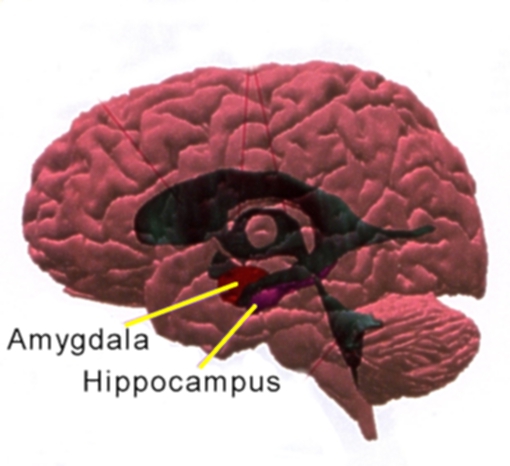« Prev Next »
 Transport yourselves back to sprawling across the living room floor—colored blocks scattered like confetti about the carpet—building the highest towers and fattest spaceships (without directions, of course), all the while ignoring your parents' yelps as they step on a rogue piece.
Transport yourselves back to sprawling across the living room floor—colored blocks scattered like confetti about the carpet—building the highest towers and fattest spaceships (without directions, of course), all the while ignoring your parents' yelps as they step on a rogue piece.
There's nothing quite like LEGO.
And certainly there's nothing quite like those ubiquitious yellow, blocky LEGO faces.
But a piece in The Daily Mail last week cites that "LEGO faces are getting angrier," and that this may, in turn, "be harming children's development."
Christopher Bartneck, of the University of Canterbury in New Zealand, will be presenting his findings at the First International Conference on Human-Agent Interaction in Japan this August. The central theme of the conference will explore how humans interact with objects that represent different personalities.
Whoa whoa whoa...let's slow down a bit. Perhaps LEGO faces have indeed become angrier—and more disdainful, more fearful, more smug—since their 1975 debut. But is it actually affecting the emotional and mental well-being and learning of a developing child?
To conduct the study, Bartneck asked 250 U.S. adults to rate the various emotions of over 600 LEGO faces ("minifigs") ranging from the years 1975 to 2010. While "happiness" was ranked the most common expression (just over 50% of the faces), "anger" followed close behind. (Other emotions, in order of descending frequency, included "confidence," "disdain," "concern," and "fear.")
The authors conclude that toymakers should test the effect of their designs on children given that "toys play an important role in the development of children," especially in this "world in which heroes are scared and villians can have a superior smile."
A reasonable proposal, given that 4 of every 5 children under age 12 receive at least ten new toys each year. But are angry LEGO faces really screwing up the younger generation?
We might never know. But probably not.
 In a 1999 study by Baird and colleagues, adolescents were examined via functional magnetic resonance imaging (fMRI) while asked to recognize emotions in faces. As expected, the amygdala—a region of the brain implicated in processing emotional experiences—was more activated when viewing faces compared to "nonsense" (non-facial) images. This was especially true for fearful expressions.
In a 1999 study by Baird and colleagues, adolescents were examined via functional magnetic resonance imaging (fMRI) while asked to recognize emotions in faces. As expected, the amygdala—a region of the brain implicated in processing emotional experiences—was more activated when viewing faces compared to "nonsense" (non-facial) images. This was especially true for fearful expressions.
Expanding upon this, a 2001 study by Thomas and colleagues examined amygdala activation in both adults and children. While adults (like adolescents in Baird's study) demonstrated increased amygdala activity for fearful faces compared to neutral faces, this was not true for children; strangely, children's amygdalas reacted more strongly to neutral faces. Interestingly, upon repeated exposure to the same fearful faces, boys—but not girls—showed dampened activity of the amygdala.
If children react so differently—at least, in the brain—to facial expression, is it right to ask adults to rate the emotions of 600 minifigs, much less compare these ratings to a young person's development?
And let's not lose sight of the purpose of LEGO: to create. Scenes, characters, stories. Since when is conflict in creative storytelling a bad thing?
A 2011 meta-analysis of 86 fMRI studies by Raymond Mar of York University in Canada concluded that the brain regions recruited in understanding stories overlap with those used to empathize and interact with others. In other words, the more frequently we are able to share in a fictional character's emotions, perhaps the better we are able to understand the emotions of friends and strangers alike in real life. And what more important skill than for a child?
These days, LEGO sets tend to emphasize story and conflict, from villians like Darth Vader in Star Wars to Voldemort in Harry Potter. "We made [the stories] all up on our own," notes a friend of mine when recalling childhood LEGO escapades with her sister. "I think it helped us to be imaginative and creative."
Were today's young adults affected by the faces of their toys 20 years ago? "They were mostly happy, I guess," was the typical response when I posed the question.
"Don't even remember other faces!" notes our very own Khalil.
He turned out alright.
--
Baird, A. et al. Functional magnetic resonance imaging of facial affect recognition in children and adolescents. Journal of the American Academy of Child and Adolescent Psychiatry 38: 195-199 (1999).
Mar, R. The neural bases of social cognition and story comprehension. Annual Reviews of Psychology 62: 103-134 (2011).
Thomas, K. et al. Amygdala response to facial expressions in children and adults. Society of Biological Psychiatry 49: 309-316 (2001).
Image credit: bootoyz (via Flickr) and PSY324 (Creative Commons license).























http://ksj.mit.edu/tracker/2013/06/study-links-angry-lego-figures-bad-journ
Angry LEGO faces won't turn kids into psychopaths!